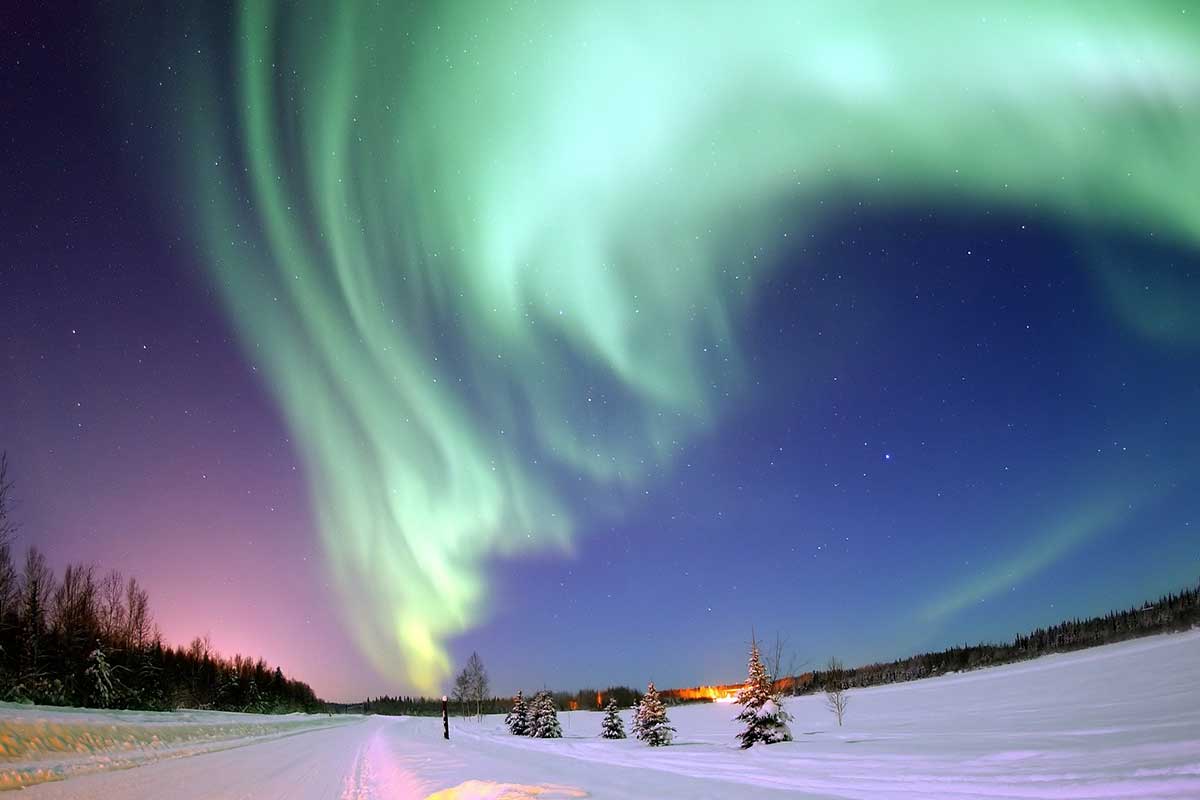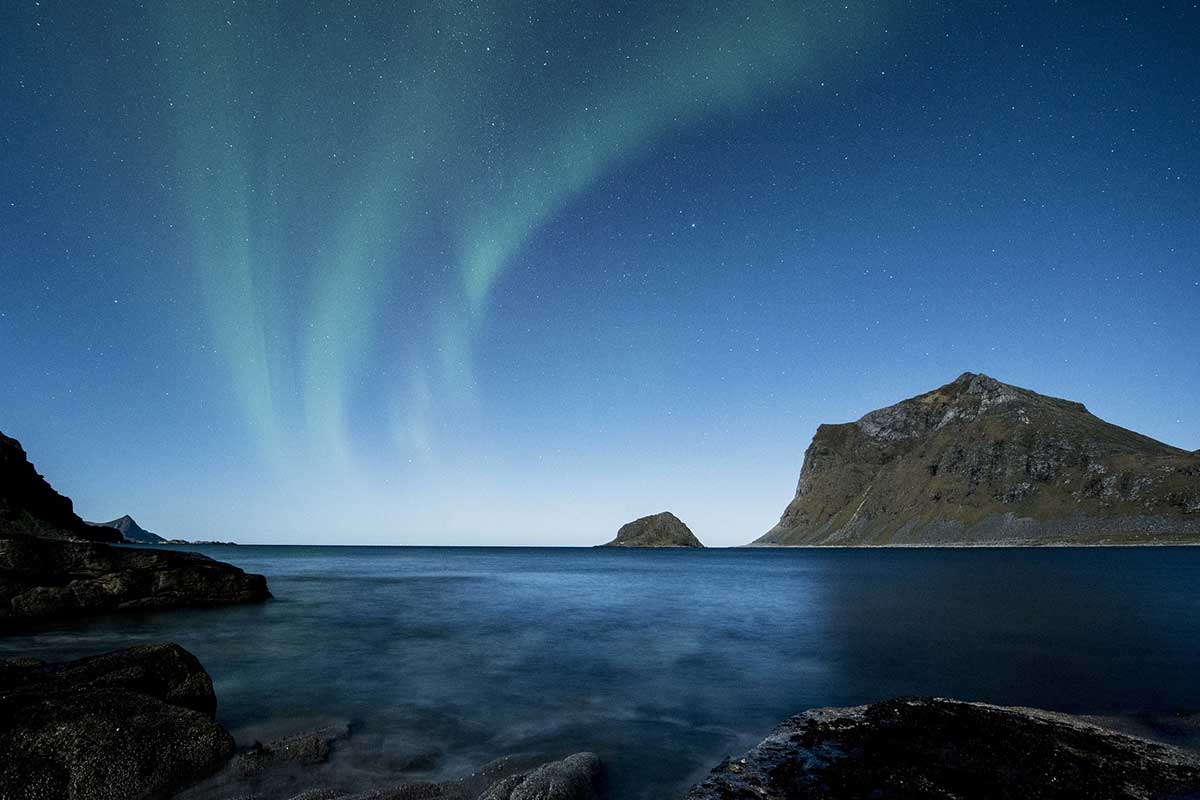Chasing the northern lights, why not you!
Published on December 17, 2024
Who has never dreamed of heading to the far north to admire the northern lights?
Many people dream of being able to see at least once in their life the incredible luminous magic that takes over the Arctic sky. To admire a northern light, you need to head towards the countries of the North Pole during the winter magic to witness the spectacle of this natural phenomenon, which is an experience that no photo or video can truly capture. You have to see it live during a polar night to contemplate this celestial beauty. For those who dream of seeing this majestic beauty, the northern lights are a bit like the cherry on the cake.
What is a northern light?
A northern light is concretely a polar aurora that is observed in the northern hemisphere. It is actually a luminous phenomenon characterized by extremely colorful veils at a certain latitude in the night sky. Green is the predominant color, to which other colors such as violet, pink, and blue can be added, depending on the intensity.
Northern lights are very often caused by violent solar storms releasing a large quantity of electrons and protons that come from the sun and arrive in the Earth's atmosphere to excite the atoms of oxygen and nitrogen, which in turn suddenly become luminous and produce the magnificent veils (ribbons or curtains) of colored light.
The green color of the northern lights is explained by the collision between charged particles and oxygen molecules at low altitude (about 100 to 300 km).
Each aurora differs from the other. The experience is unique and has no equal. Ten sightings will give you ten different shows, believe me.
Where to see the northern lights?
As we have seen, northern lights can be seen more easily near the magnetic poles. Thus, Alaska, Antarctica, Lapland, Iceland, Greenland, and northern Canada are the most suitable areas to observe them.

For Europeans, Norway, Finland, Sweden, and Iceland are the most accessible countries to see them.
However, they are not observed in the same way depending on the country.
In the case of Norway, it is recommended to be above the polar circle to give yourself every chance to observe them, or in Tromso, which is one of the cities renowned for seeing the northern lights.
Located in the north, near the Arctic Circle, Iceland is a privileged destination to observe the northern lights.

In Iceland, you can see the northern lights from the end of August to mid-April, so logically for 8 months. A trip to Iceland during this period is therefore a huge opportunity for you to see them if the weather conditions are right.
The northern lights are visible to the naked eye, like the stars, but only during dark nights with a clear sky. In Iceland, the sun does not set in summer, which is why it is impossible to see them. However, in summer, you can admire the midnight sun.
In Sweden, you have to be in the north of the country, more precisely in Lapland, to have the chance to see them. Your flight should therefore land at Kiruna airport. The most ideal period to see the northern lights in Lapland is between the end of September and the end of March. But your chances will be more optimal during the winter months such as November, December, January, and February. However, you can still observe them in September, October, and March if the weather conditions are good.
Surprisingly, there is also another impressive natural phenomenon that you can see in Sweden, which is the midnight sun. In summer, around the summer solstice, the sun is visible 24 hours a day north of the polar circle. This phenomenon lasts on average 30 days: in Abisko from June 17 to July 19, in Jokkmokk from June 8 to July 3, and in Kiruna from May 31 to July 11.
But also in the south of Sweden, another phenomenon occurs around the summer solstice. It is the white night, which is a night where the sun, although set, does not go far enough below the horizon to allow the night to become truly dark.
In northern Canada and in most regions surrounding the Earth's magnetic poles, it is not uncommon to see the phenomenon of the northern lights once night falls. Fabulous, almost contemplative, the northern lights always impress and many visitors consider them a must-see during a trip to the Far North.
The observation of the northern lights is done in three main places: the high latitude regions, the mid and low latitude regions.
The high latitudes are the north of Alaska and Nunavik in Quebec. In these places located between 64 degrees and 87 degrees north latitude, northern light displays are almost daily.
Low latitudes such as Quebec, Montreal, and Ottawa will need very strong solar eruptions to witness auroral displays. Statistically, you can observe the northern lights from 1 to 3 nights per month in these regions of the country. Very often, the northern lights are active just before midnight. But you can observe them a few rare times between 10:00 p.m. and 3:00 a.m.
According to several observation statistics, the months of September-October and February-March are the most favorable to observe this fascinating phenomenon.
When to see the northern lights?
In most cases, the ideal period to see the northern lights is between September and March, and between 6 p.m. and 1 a.m. Still, you can never be sure to see them. You must take into account activity forecasts such as the weather, because things can change.
A website by
Customize your trips with Quotatrip and receive tailor-made offers directly in your inbox.